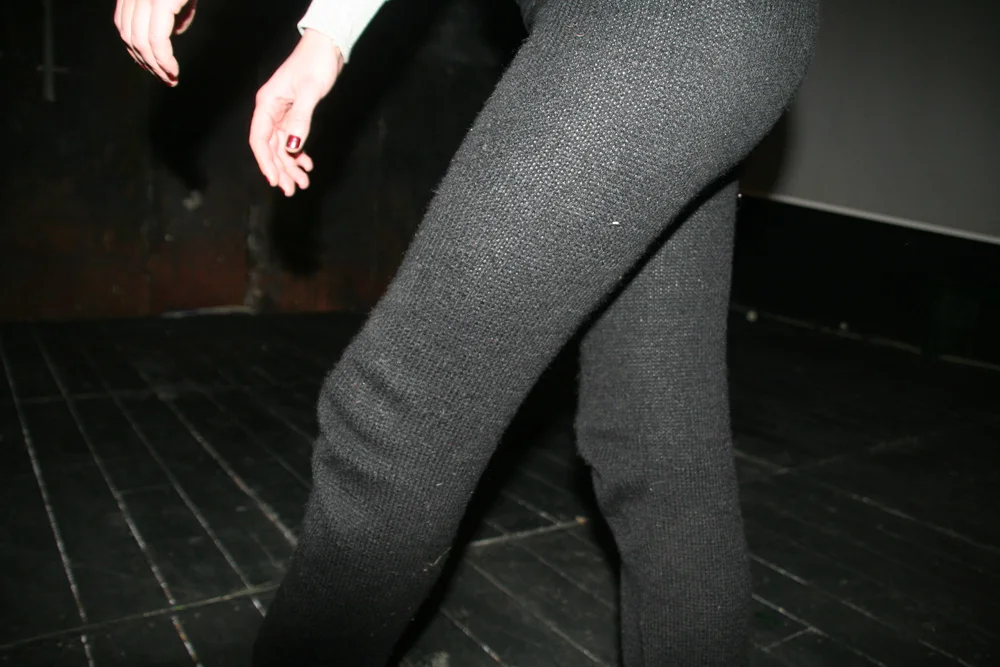Concept/Choreography: Diana Sabri
Performers: Andrea Bauer, Hayley Metcalf, Samantha Woulnough
Text, Sound and Voice: Xavi Oviedo Ferro, Diana Sabri
Lighting: Mike Toon
Michaelis Dance Theatre, Roehampton Campus - London, UK
Attempting to unfold the stories of women who have become victims of sex trafficking, this performance depicts a woman stripped of her identity and deceived by the prospects of a better future, that are betrayed as she enters a world of slavery and violence. In the context of a strip tease dance, the performance explores and blurs the kinesiology of a series of movements as they transform the body into one of suffering and humiliation.
Having spent a great deal of time learning about the underground labour and sex industry, I was troubled by how I can re-create a situation in performance without it developing into a confession or a verbally statistical account of events, that would immediately place the audience as a witness of a re-enactment and not as a receiver of an actual experience.
With inflowing migration having risen in Europe over the past decade, it’s troubling to see how little has been done to help migrants and refugees fleeing their countries and even more troubling, to know that women and children are the most hard-hit victims of illegal immigration. Who decides whether immigration is illegal or legal and Why? (This is a question that developed in my B.A dissertation research on immigration policies within the E.U. regarding child education and cultural adaptation amongst refugee communities).
With these concerns being at the heart of this very sensitive process,I chose to place the audience in a situation where they became participants of an experience.
Introducing the women’s motives for migrating through recorded sounds and texts, the performance and audience space developed into a strip tease bar as one of the dancers performedher movements to entertain the audience directly. Exploring the kinesiology of a series of movements, that are common in strip tease dance, the choreography gradually blurred these movement qualities as they altered and transformed into an embodiment of the victim’s internal / emotional state.
